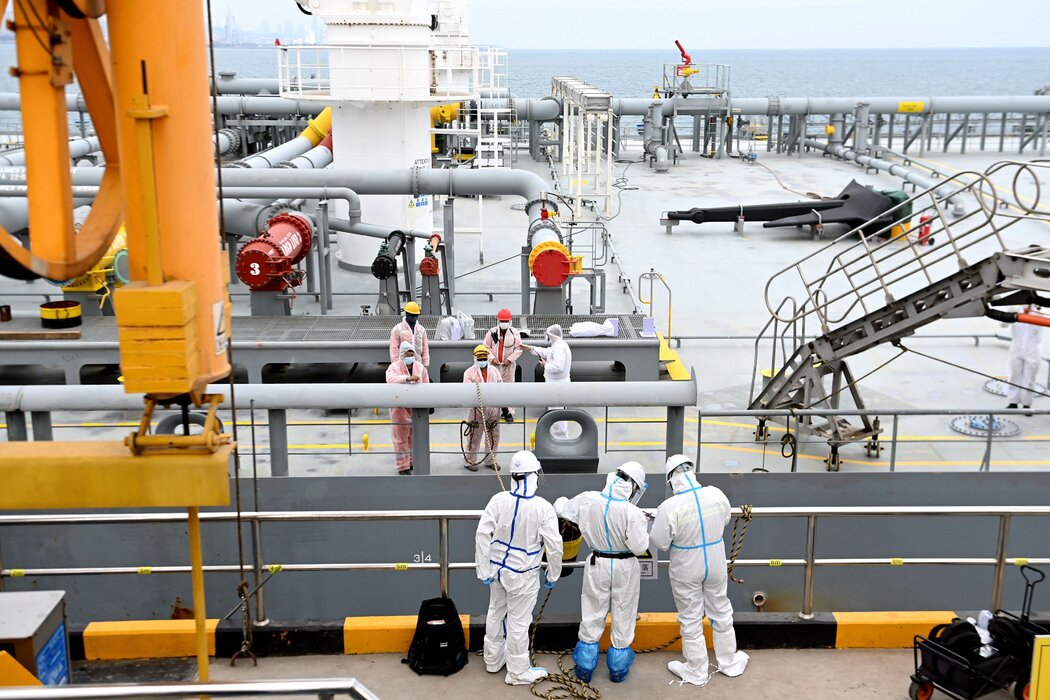Commodities
Energy & precious metals – weekly review and outlook

As Scottish poet and lyricist Robert Burns wrote in 1785, “The best laid plans of mice and men often go awry.” Nearly two and a half centuries later, the Saudis and other price hawks in OPEC are trying to understand that.
Three production cuts announced since October by the Organization of the Petroleum Exporting Countries and its allies – supported largely by the Saudis – have done little for crude prices. That is surprising, especially during this time of the year, when demand for oil should already be ebullient from summer travel.
The Saudis want oil at $80 per barrel or more by next month – or August at least. But all indications say they need to have more patience amid forces beyond their control: the central banks of the world.
From the Federal Reserve to the Bank of England and the European Central Bank – and even the Bank of Canada is somewhere in there – the race is on to implement at least one or two interest rate hikes before the year is out. And rate cuts could seize up global growth, which is the engine of oil demand.
On paper, global crude supply has already lost 4.16 million barrels per day from cuts pledged by the 23 OPEC nations over an eight-month span. The Saudi portion of that is a decline of at least 2.5 million per day, as it targets to produce just 9 million barrels daily from July versus the usual 11 million.
Saudi Energy Minister Abdulaziz bin Salman has generously offered to add to those cuts if necessary. This is partly in order to get to the prices targeted by the kingdom and partly to screw the happiness of short sellers in the market, whom the prince hates with a special vengeance.
Those long on oil will scoff at suggestions that Saudi aspirations can be suppressed any further when the kingdom signals a will to reduce output as far as necessary to pull the market back up.
Oil bulls are certain that global travel will accelerate in July and August, and that this will result in a critical shortage of crude needed by U.S. refineries as the Saudis deliberately cut more barrels to that destination than elsewhere. Also, unless they’re extended, weekly sales of crude from the Strategic Petroleum Reserve will stop by then, eliminating that one weapon the Biden administration has had in keeping prices low.
Of course, all this constitutes the best-laid plans of the oil price hawks. But as Burns’ poem suggests, history is full of frustrated men and mice alike where this is concerned.
And is a chance for more grim faces among oil bulls. The health of the economy is paramount to the growth of energy prices. Stronger-than-expected U.S. jobs numbers, as well as gross domestic product, are just what the doctor has ordered now for the oil market.
But that’s only half the picture. The forecasting beating labor and GDP data could exert upward pressure on wages and inflation, which is in danger of becoming entrenched. The Fed’s only known response to such a situation are higher rates – which, in turn, will dilute both growth and prospects for higher oil prices. That explains why Wall Street banks have been cutting their price forecasts.
JPMorgan on Wednesday became the last of the major banks to slash crude price forecasts, cutting its second-half Brent crude targets by 11% to $82 a barrel. Prior to JPM, Goldman Sachs – Wall Street’s biggest cheerleader for oil – lowered its forecasts as supplies from troubled producers like Russia and Iran have proven surprisingly resilient. Last month, Bank of America also downgraded its outlook as tighter monetary policy erodes fuel consumption. Morgan Stanley also said last month that the supply tightness widely expected in oil during the second half may no longer happen.
Even prior to that, veteran Citigroup analyst Ed Morse warned late last year that China’s shaky emergence from the pandemic and plentiful supplies would put a lid on crude – and set a price target for 2023 at $80 a barrel. He seems to have still overreached from where prices are now.
Oil: Market Settlements and Activity
New York-traded West Texas Intermediate crude, or WTI, saw a final trade of $69.50 on Friday after officially settling the session at $69.16 per barrel, down 35 cents, or 0.5%, on the day. Earlier in the session, WTI plunged to a three-week low of $67.36. For the week, it showed a loss of 3.7%. The U.S. crude benchmark has had a volatile month, finishing last week up 2.3% after a net 3.5% tumble over two prior weeks.
London-traded Brent crude did a final trade of $74.44 after officially settling at $73.85, down 29 cents, or 0.4%, on the day. Earlier, Brent hit a three-week low at $72.12. Like WTI, it was off about 4% for the current week. The global crude benchmark has also had a rocky June, finishing last week up 2.4%, after a net slump of nearly 2% over two previous weeks.
Oil: WTI Technical Outlook
Going into the week ahead, the U.S. crude benchmark is likely to find resistance at above $72 and support at around $67, said Sunil Kumar Dixit, chief technical strategist at SKCharting.com.
“The 50-day EMA, or Exponential Moving Average, of $72.20 is likely to act as resistance, below which a retest of the 200-week SMA, or Simple Moving Average, $67.40 is a high probability,” Dixit said. “A sustained break below this zone will eventually extend the decline towards the swing low of $63.65.”
WTI’s broad outlook remains bearish, with the 100-Month SMA target of $59.65 still on the radar of oil bears, as long as the U.S. crude benchmark sustained below the five-month EMA of $73.10 and the Weekly Middle Bollinger Band of $74.33
Gold: Market Settlements and Activity
The gold bull is still trying to hang in there despite a less-than-perfect macro picture.
The front-month August gold contract on New York’s Comex did a final trade of $1,930.30 an ounce on Friday, after officially settling the session at $1,929.60 – up $5.90, or 0.3%, on the day. Earlier in the session, it fell to $1,919.85 – a new low since mid-March. For the week, though, the benchmark for U.S. gold futures finished down 2%, its sharpest swoon since the end of January.
The spot price of gold, which reflects physical trades in bullion and is more closely followed than futures by some traders, settled at $1,921.47, up $7.67, or 0.4%. It tumbled to a three-month low of $1,910.24 earlier. For June thus far, the contact is down 2.6% after a 1.8% slide for May. Notwithstanding those monthly losses, it is still up more than 5% so far this year.
Gold took a hit earlier in the week as the U.S. dollar rebounded after the Bank of England raised interest rates by half a percentage point – twice more than forecast – saying it needed to act against “significant” indicators that British inflation would take longer to fall. The U.K.’s main interest rate is now at 5%, the highest since 2008, after its largest rate increase since February.
The U.K. central bank has raised rates 13 consecutive times to trail just behind the Federal Reserve, which has brought U.S. rates to a peak of 5.25% with 10 straight rounds of tightening. The Fed itself indicates that it wants to raise rates at least twice more before year end.
“If swap futures start to believe the Fed will likely deliver two more rate increases, gold could remain vulnerable,” said Ed Moya, analyst at online trading platform OANDA. “However, if risk aversion runs wild, gold could see some flight to safety flows. Gold has key support at the $1,900 level and resistance at the $1,960 region.”
Gold: Price Outlook
Spot gold has to go above $1,940 in the coming week to reestablish its upside, said SKCharting’s Dixit.
“In the event of a recovery from the lows, the 100-day SMA of $1,942 has to be cleared, with day closing above the zone as this zone coincides with the 50% Fibonacci level,” he said. “This will help gold rise to the 50-day EMA of $1,959, which indicates buyers stepping in for a retest of the $1,975 level, coinciding with the 38.2% Fibonacci level.”
On the flip side, gold bears will be trying to approach the 50-week EMA of $1,882 and the 200-day SMA of $1,853.
Natural gas: Market Settlements and Activity
The bulls in natural gas are making a serious push above mid-$2 pricing for the fuel amid prospects for warmer temperatures that could see Americans cranking up their air-conditioners a little more than usual this summer.
A late-day Friday rally sharply pushed up the most active August gas futures contract on the New York Mercantile Exchange’s Henry Hub. August did a final trade at $2.731 per mmBtu, or metric million British thermal units. It earlier settled the session officially at $2.729, up 12.1 cents on the day. For the week, the benchmark gas futures contract rose 3.7%, extending on prior back-to-back weekly gains of 16.8% and 3.8%.
It has been an interesting week for natural gas, with bulls managing to keep the market in positive territory for four out of five sessions – including on Thursday, when the U.S. Energy Information Administration, or EIA, reported a higher-than-expected weekly storage number for nat gas.
Natural gas in storage rose by 95 billion cubic feet last week. The highest build estimate by most analysts for last week was 91 bcf. In the prior week to June 9, utilities injected just 84 bcf into storage after burning the gas needed to meet power and cooling needs.
The latest 95-bcf build compared with a 76-bcf injection during the same week a year ago and a five-year (2018-2022) average increase of 86 bcf. It bumped up the total volume of gas in underground caverns in the U.S. to 2.729 trillion cubic feet, or tcf – up 26.5% from the year-ago level of 2.158 tcf and 15.3% higher than the five-year average of 2.367 tcf.
In Friday’s session, Henry Hub’s front-month got to a low of $2.524, ostensibly on concerns over the supply build, before rebounding.
Gas prices have managed to stay at or above the mid-$2 mark of late, helped by anticipation of higher cooling demand in the coming days and weeks as the U.S. summer season is projected to bring warmer temperatures.
“Power burn demand has decreased to 37.9 bcf/day today,” analysts at Houston-based energy markets advisory Gelber & Associates said in a note on Thursday to their clients in natural gas. “As weather warms over the coming weeks, power burn is likely to increase back to previous levels and push higher.”
With a near 15% gain for June, gas futures on the Henry Hub are headed for their best performance since August – the month they hit a 14-year high of $10 per mmBtu.
While summer weather hasn’t hit its typical baking point across the country, cooling demand is inching up by the day, particularly in Texas. This has sparked a realization in the trade that higher price lows might be more common than new bottoms. The lowest Henry Hub’s front-month got to this week was $2.448, versus the $2.136 bottom seen at the start of June.
Natural gas: Price Outlook
Natural gas’ next target will be $3 per mmBtu if it clears resistance at $2.75, said SKCharting’s Dixit.
“Going further, bulls need to make a decisive breakout above the 100-day SMA of $2.76 for a further advance towards $3 and $3.25. The next leg higher will be the 50-month EMA of $3.66 and the confluence of the 200-month SMA of $3.73 and $3.76.”
Commodities
Oil prices rise; U.S. crude inventories plunge, Russia-Ukraine truce eyed
Commodities
India’s Reliance to stop buying Venezuelan oil over US tariffs, sources say
Commodities
Oil prices climb on Venezuela supply worries

 Forex3 years ago
Forex3 years agoForex Today: the dollar is gaining strength amid gloomy sentiment at the start of the Fed’s week

 Forex3 years ago
Forex3 years agoUnbiased review of Pocket Option broker

 Forex3 years ago
Forex3 years agoDollar to pound sterling exchange rate today: Pound plummeted to its lowest since 1985

 Forex3 years ago
Forex3 years agoHow is the Australian dollar doing today?

 Cryptocurrency3 years ago
Cryptocurrency3 years agoWhat happened in the crypto market – current events today

 World3 years ago
World3 years agoWhy are modern video games an art form?

 Commodities3 years ago
Commodities3 years agoCopper continues to fall in price on expectations of lower demand in China

 Economy3 years ago
Economy3 years agoCrude oil tankers double in price due to EU anti-Russian sanctions



































